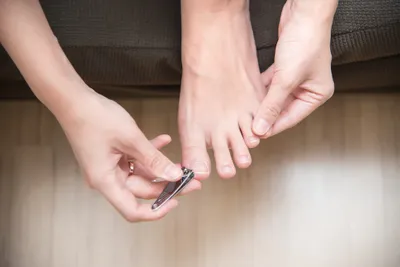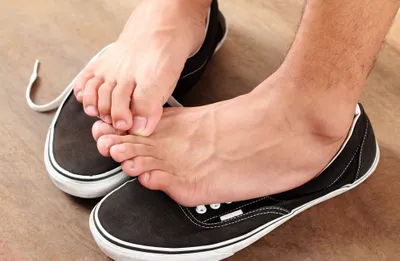Nail fungus (onychomycosis), which affects the toenails in particular, is a big reason why many Americans keep their socks on with their sandals (we assume this, there’s no medical study to cite). Not only is it unsightly, it can also lead to damaged and even lost nails.
While the infection can seem insurmountable, there are medications as well as lifestyle changes you can make to fight the fungus. Having toenail fungus does not make you feel like a fungi (ahem, get it fun-guy), so let’s have a look at six facts about this condition to better understand it…
1. Nail Fungus is Fairly Common
You may feel a bit embarrassed about your nail fungus, but the truth is there’s probably others in the pool change room feeling just like you. Global Healing Center notes that nail fungus (affecting fingernails and toenails) is “surprisingly common and occurs more frequently with age”.
The source notes that about 5-percent of people suffer from a nail fungus infection, and “although less visible, toenail fungal infections are more prevalent than fingernail.” That means there probably people you know with the same problem that are also covering it up.
2. Some Treatments Aren’t Effective
Healthline.com notes that many over-the-counter remedies for nail fungus aren’t very effective, and that you will probably have to turn to your doctor for more reliable results. Doctors typically prescribe terbinafine (Lamisil), itraconazole (Sporanox), fluconazole (Diflucan), or griseofulvin (Gris-Peg), according to the source.
As well as oral medications, there are antifungal nail lacquers that can be brushed directly onto the affected nails. These treatments can be effective, but they can also take several months to yield results, adds the source.
3. There Could be Underlying Health Problems
The Mayo Clinic lists a number of risk factors for developing nail fungus, and points to medical conditions including diabetes, circulatory problems, or a weakened immune system. Down Syndrome in children also boosts the chance of infection, it adds.
Other risk factors include older age, heavy perspiration, being male, working in a moist environment, walking barefoot in public areas (like swimming pools), having a nail injury, or a skin condition such as psoriasis, according to the clinic.
4. There are Tips to Prevent Nail Fungus
Healthline.com notes there are ways to avoid it, which is obviously better than trying to treat the infection once you have it. “Making a few simple lifestyle changes can help prevent a fungal infection of the nails,” notes the source.
These tips from the source include keeping your nails nicely trimmed and clean, and ensuring your feet and hands are not damp for prolonged periods of time (wear rubber gloves if this is unavoidable). Also ensure you dry your feet well after a shower, wear breathable socks, and only get a manicure or pedicure from a reputable establishment, it adds.
5. Nail Fungus is Contagious
Yep, it’s true. You can get nail fungus by coming into contact with someone with nail fungus. How contagious is it, though? “It’s unlikely that you’ll catch toenail fungus from having coffee with a friend,” explains EveryHealth.com.
However, if you share socks or shoes with someone that has a fungal infection, you may develop it yourself, warns the source. However, the chance of the fungal infection leaping across the room onto your own toenails is pretty much non-existent, according to the source, which suggests wearing shower shoes in public change rooms to avoid picking up any contaminants.
6. Nail Fungus Can Spread
The same source says that nail fungus can actually part from the nail and travel to other parts of your body. Most at risk is the nails surrounding the affected nail, says EveryDayHealth. The skin surrounding the nails can also be affected, leading to Athlete’s Foot, a fungal infection of the feet.
This nail fungus can also travel to the genital regions (causing what’s known as “jock itch”), when underwear is pulled over infected toenails. “If your toenails are infected, put socks on before you put on underwear,” suggests the source.









